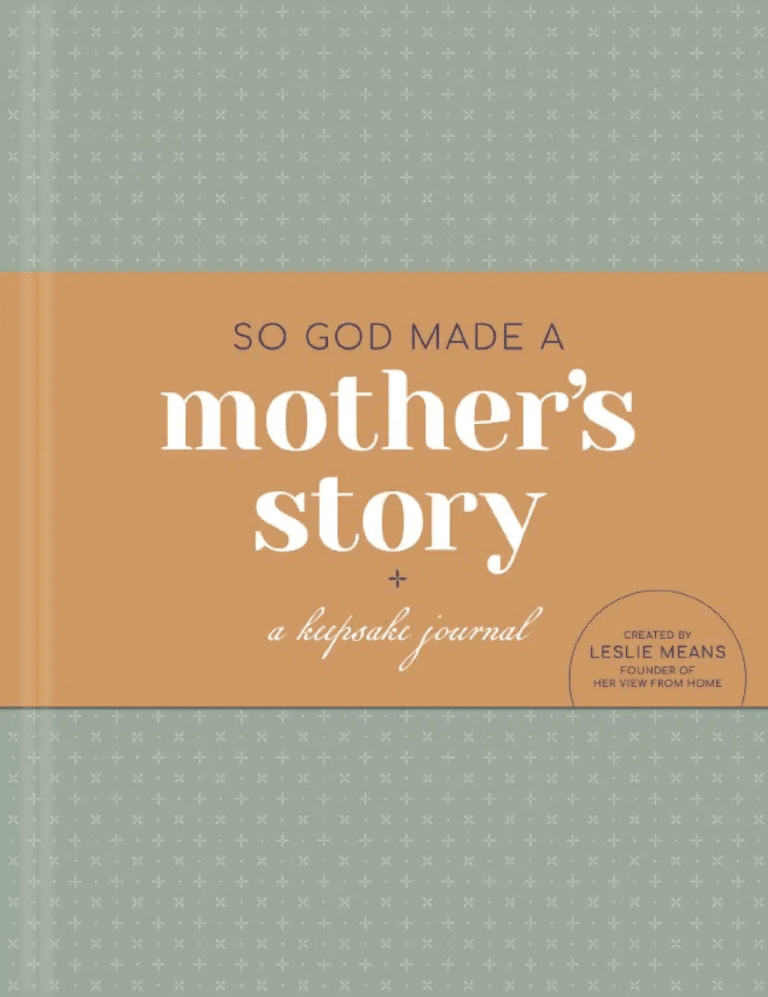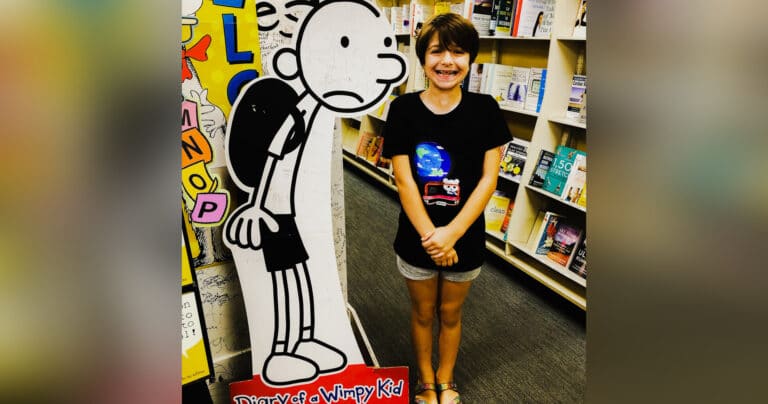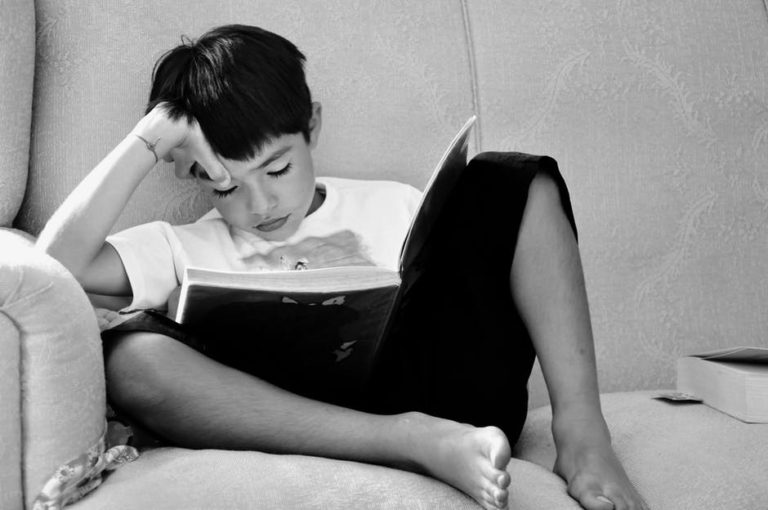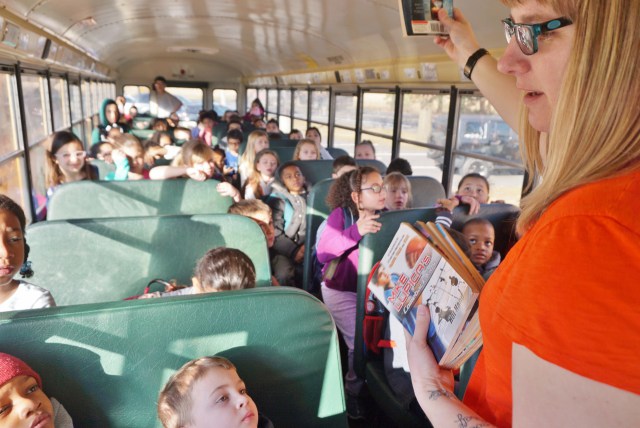My dad had the best reading light in the house, a 1970s silver bulbous metal shade attached to a long pole standing directly beside the brown corduroy chair constantly tilted back to a 45-degree angle so he could prop up his feet and read the newspaper after work. My 7-year-old self fit snuggly back there, laying on my belly, my feet kicking behind me while I solved mysteries with Trixie Belden and her wealthy, almost-too-perfect BFF Honey Wheeler. I was 100% there for every adventure they had . . . all 34 of them.
But I never re-read them. Not a single one.
My 10-year-old daughter, on the other hand, has read every Diary of a Wimpy Kid book approximately a zillion times. For a long time, they were all she would read. Over and over again. But even now, when her repertoire has expanded from Warrior Cats to the Wonderland series to Coyote Sunrise, she still goes back to Jeff Kinney’s books in between books that challenge her emotional growth and her reading level a bit more.
The Wimpy Kid books comfort her, like a favorite stuffed animal. She retreats into them when she’s bored. Or uncharacteristically troubled by something. Or when she just needs a break from life. Because let’s be honest, nothing is easy about being a kid. And we all need comfort sometimes. I had my dad’s La-Z-Boy and Trixie Belden. She has a bed piled high with fuzzy pillows and Diary of a Wimpy Kid.
“Chapter books are where your child meets characters who will be important friends—they will play big, ongoing roles in a reader’s life as he or she grows into a more independent, self-sufficient person. In these books, children also begin to follow longer, twistier stories, to enter into enchanting and breathtaking literary fantasy worlds with their own rules and logic, and to discover stories that will help them work through the many changes they are experiencing in their world and in themselves” (“How to Raise a Reader,” New York Times).
RELATED: 12 Books to Rediscover With Your Tween
When parents come into the store and want to pry Captain Underpants out of their kid’s hands, I worry a little bit.
Because a kid’s love of reading can be fragile.
They encounter a lot of required texts at school. And books grown-ups sometimes push because they will be good for them in some way.
In fourth grade, my teacher assigned a book report on a nonfiction book. I don’t remember what I read. But I clearly remember believing to my core that I might die of ennui before I finished reading the book, much less reporting on it. But it was good for me. Blech. (Just for the record, nonfiction has to have an exceptionally narrative quality for me to enjoy it even now. Whether it’s good for me or not.)
So, yes, in the name of education, sometimes kids are asked to read books they wouldn’t pick on their own and may have no real interest in. But then there’s that 20 to 30 minutes of reading that most elementary kids (and some middle schoolers) are assigned each night.
That reading should be pure joy.
If they want to re-read Big Nate for the umpteenth hundredth time . . . well, let them. Reading for pleasure is an endgame in its own right. But there’s more good news: reading repetition has value.
“People often say that practice makes perfect. Research certainly supports this, especially in children. In fact, studies have shown that repetition can be critically important for learning in general (e.g., Karpicke & Roediger, 2008)—especially for memory (Hintzman, 1976) and language learning (Schwab & Lew-Williams, 2016). So while adults can easily pick up new information from a single exposure, when kids ask to watch the same movie they’ve already seen a hundred times or read the same book before bed for the 10th night in a row, it might just be their way of learning the storyline” (Vanessa LoBue Ph.D., aka The Baby Scientist).
If we want to cultivate a generation of readers who love books, we have to actually let them read what they love.
And, yes, that means graphic novels, too. I’ve had lots of parents come in this summer with the goal of transitioning their kids from graphic novels (which they don’t feel like count as real reading) to full chapter books. With no pictures. That is a HUGE shift.
I’ve definitely seen kids devour the Wings of Fire graphic novels and move to the chapter books because they loved the world they were immersed in and wanted more. But that shift needs to be their idea. Otherwise, that chapter book is just going to sit there, looking forlorn, tossed in a corner on their bedroom floor, never getting read.
RELATED: “Goodnight moon….Goodnight books.”
But there’s good news. There’s no reason to believe that graphic novels aren’t real reading or that they don’t contribute to analytical thinking or to a child’s understanding of storytelling and “the ways texts and images all around them communicate.”
“With graphic novels, students use text and images to make inferences and synthesize information, both of which are abstract and challenging skills for readers. Images, just like text, can be interpreted in many different ways, and can bring nuances to the meaning of the story. In this form of literature, the images and the text are of equal importance—the text would not fully make sense without the images, and the reverse is true as well” (The Research Behind Graphic Novels and Young Learners, Northwestern University).
This school year, let your kid read Stick Cat for the hundredth time. Or introduce them to a cool new graphic novel series like Cleopatra in Space or 5 Worlds. Just let them read what they like. You’ll argue a lot less. And you might find that you have a kid who really loves to read after all.
Originally published on the author’s blog
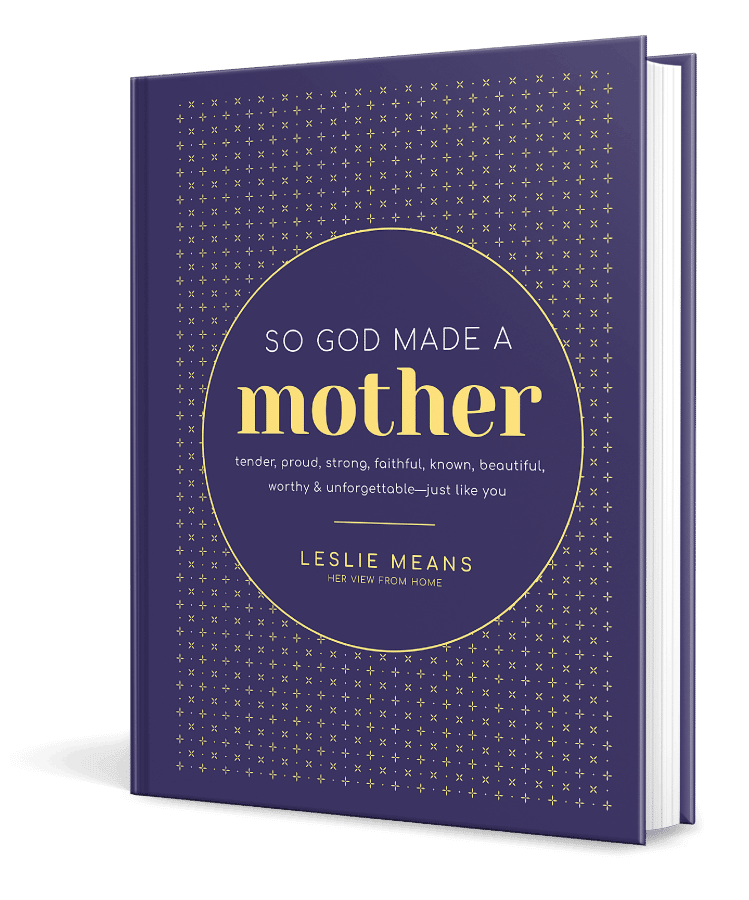
If you liked this, you'll love our book, SO GOD MADE A MOTHER available now!
Order NowCheck out our new Keepsake Companion Journal that pairs with our So God Made a Mother book!
Order Now